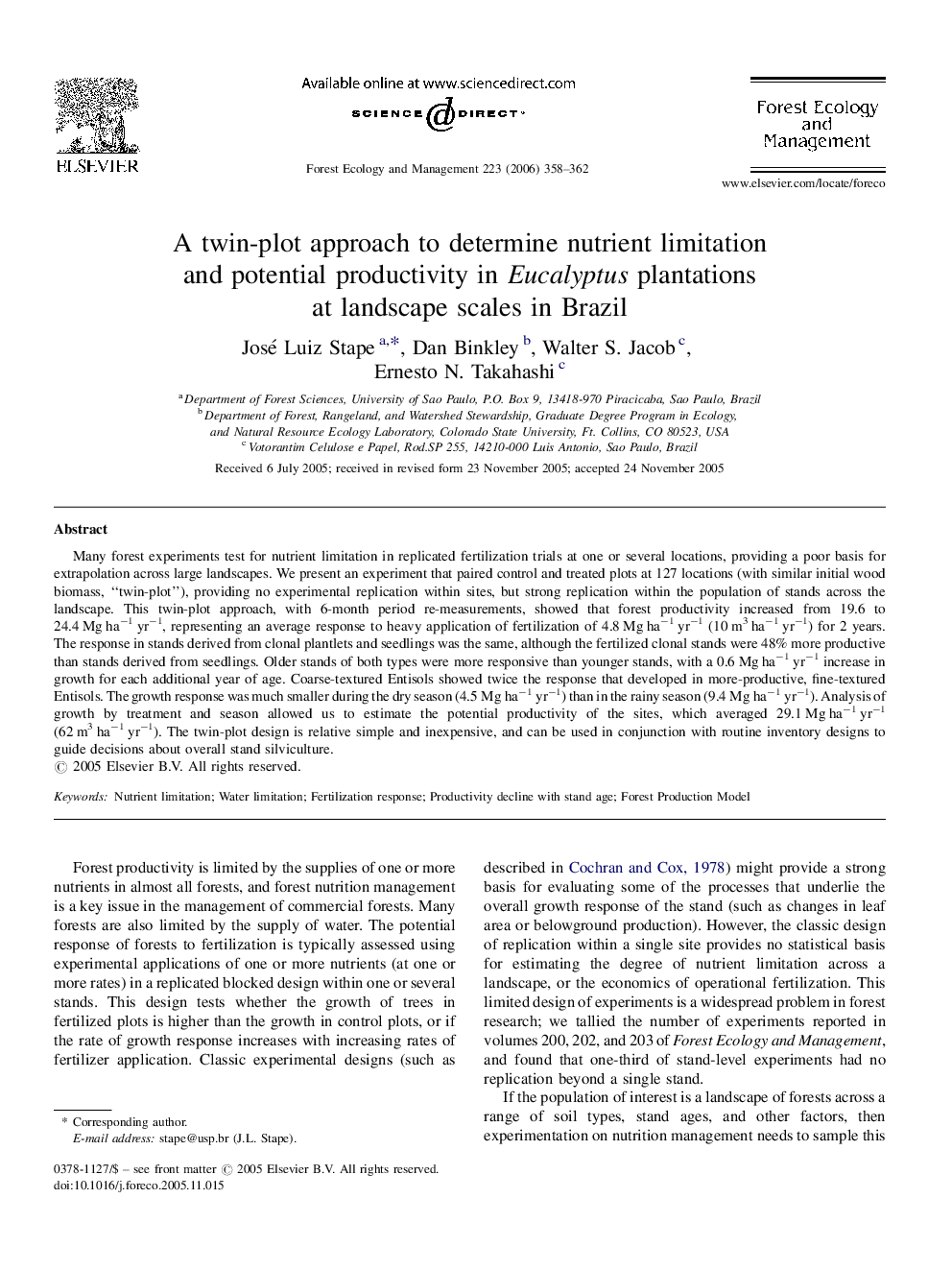| Article ID | Journal | Published Year | Pages | File Type |
|---|---|---|---|---|
| 90605 | Forest Ecology and Management | 2006 | 5 Pages |
Many forest experiments test for nutrient limitation in replicated fertilization trials at one or several locations, providing a poor basis for extrapolation across large landscapes. We present an experiment that paired control and treated plots at 127 locations (with similar initial wood biomass, “twin-plot”), providing no experimental replication within sites, but strong replication within the population of stands across the landscape. This twin-plot approach, with 6-month period re-measurements, showed that forest productivity increased from 19.6 to 24.4 Mg ha−1 yr−1, representing an average response to heavy application of fertilization of 4.8 Mg ha−1 yr−1 (10 m3 ha−1 yr−1) for 2 years. The response in stands derived from clonal plantlets and seedlings was the same, although the fertilized clonal stands were 48% more productive than stands derived from seedlings. Older stands of both types were more responsive than younger stands, with a 0.6 Mg ha−1 yr−1 increase in growth for each additional year of age. Coarse-textured Entisols showed twice the response that developed in more-productive, fine-textured Entisols. The growth response was much smaller during the dry season (4.5 Mg ha−1 yr−1) than in the rainy season (9.4 Mg ha−1 yr−1). Analysis of growth by treatment and season allowed us to estimate the potential productivity of the sites, which averaged 29.1 Mg ha−1 yr−1 (62 m3 ha−1 yr−1). The twin-plot design is relative simple and inexpensive, and can be used in conjunction with routine inventory designs to guide decisions about overall stand silviculture.
